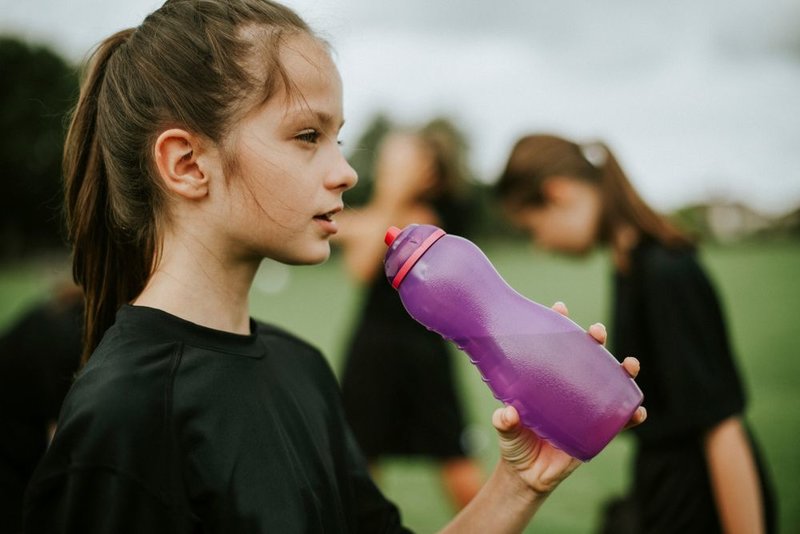
We aim to give food for thought as well as inspiring your creativity and
providing practical ideas you can’t wait to implement in your own settings!
Quench Your Thirst...
With Our Guide How to Stay Hydrated.

The FIFA Women’s World Cup is just around the corner (on 20th July, 2023) and expectations are at fever pitch (no pun intended!) that football could be coming home again, following the Lionesses’ legendary win at the Euros last year. This, coupled with the imminent start of Wimbledon season (3rd July to 16th July, 2023) and the recent spate of unusually hot weather we have enjoyed, has led us, here at EuHu, to think about how elite sports people actually keep themselves in peak, optimum condition and able to perform at the very highest level. Obviously, a large part of this is through (often gruelling) training regimes but there is also one other vital factor which is important for all of us…HYDRATION !
Water is the essence of life
Keeping our body hydrated is necessary for many of our important bodily functions to take place. As well as promoting good health, it also prevents the development of urinary tract infections (UTIs), kidney stones and constipation.
When taking part in physical activity, staying hydrated is essential - even more so when a sporting event takes place in a hot country. When engaging in any exertion though, regardless of the temperature, it is important that your body receives enough water to function at its optimum. Footballers being given a ‘half time’ interval and the regular breaks we see the tennis stars take during a match at Wimbledon highlight the importance of fluid intake.
FYI:
The Lionesses are in Group D and their first match will be against Haiti on 21st July.
Game, Set and Match!
Despite the jokes we hear about ‘cracking out the strawberries and cream’ for Wimbledon season, strawberries ARE an extra source of hydration – so this is actually a good idea…just go easy on the cream!
So, exactly how much water do we need to drink in to keep our bodies hydrated?
The NHS recommendation is to drink 6-8 glasses of water per day. They say the key to achieving this is to start drinking in the morning and continue to do so at regular intervals throughout the day. However, this can be quite a difficult thing to achieve for many people (especially with busy lives) so here are some Top Tips, which you can also pass on to your children, to help you, and them, stay in tip top condition.
Top Tips for Staying Hydrated
1. Get children into healthy habits early
Research suggests that water is vital for brain development so this is very important for children in schools and learning environments. It has been found to have a positive impact on cognitive function, attention and learning capabilities, short term memory and the ability to retain information (a vital aspect of learning). Therefore, it is important to encourage the children in your class to keep hydrated. You can do this by allowing them to have their own water bottles (brought in from home) and allowing them time to take a sip regularly throughout the day. (Obviously being mindful of children who could use this as a distraction technique!!)
2. Pack in the flavour
The 6-8 glasses don’t have to be consumed solely as plain water (especially if you don’t really enjoy the taste of plain water or if you want to change it up). Your water intake can include lower fat milk and low sugar/sugar free drinks such as low sugar cordials. To make it a bit more exciting, you could try infusing plain water with natural flavours. Why not add real fruit to it for a more natural flavouring? For example, add slices of citrus fruits such as lemon, limes or oranges, and/or experiment with flavours such as mint and basil leaves. This way, you can hopefully feel refreshed without adding any extra calories or sugars.
3. Enjoy a brew
This one is more for the adults than the children! If you enjoy hot drinks, you can aim to hydrate yourself by drinking normal*, flavoured or fruit teas and coffee*. *With caffeinated drinks, it is important to remember the stimulating effect they have, which can cause our bodies to produce urine more quickly -and can thus be counterintuitive when we are trying to keep our bodies hydrated! Non-caffeinated options are a good solution and are especially suited to the evening, so that the quality of your sleep is not affected.
4. Arm yourself with a water bottle
Invest in a reusable water bottle (maybe one that reflects your personality and/or personalised with your name so that you WANT to use it every day) and always have it with you – at work, in the car, on a walk etc. This will act as a useful reminder to keep drinking throughout the day and allows you constant access to fluids as you go about your daily routine. If it’s visible and easily accessible, you’re more likely to drink frequently.
5. ‘Jog’ your Memory
There are several apps for smart phones that you can download, which send reminder notifications, urging you to drink at regular intervals throughout the day – working in the same way as Exercise/Standing prompts that you get on smart watches.
6. Make it part of your daily routine
Use your mealtimes as a reminder to drink. If you create the habit of having a glass of water before a meal and another as you eat, this will allow you to keep on top of your hydration levels. The other advantage here is that doing this before a meal also allows us to feel full more quickly, preventing overeating. Furthermore, establishing a drinking routine that works for you and your lifestyle means you are more likely to stick to it because it will just become second nature.
7. Eat your way to that recommendation
Who said you had to drink it all? Water is a major constituent in a lot of foods (particularly ones that are good for our bodies like fruit and vegetables e.g. cucumber, celery, tomatoes, oranges, strawberries and melon). Consuming fresh soups or broths and even low sugar jellies and ice lollies (perfect for the Summer months) is also a great way to increase your water intake and keep yourself hydrated. You could even make some fruit kebabs with your class as a fun, healthy way to encourage hydration for your pupils
Maintain the mantra…hydration, hydration, hydration!

Lesson Ideas:
Here is a simple recipe that you can try with your class as a fun way to incorporate hydration, complete with extra cross-curricular activity ideas. It has been tried and tested several times in the past with Year 1 children so is suitable for adaptation across the Key Stages!

Making Still Lemonade
Recipe for Still Lemonade
You Will Need:
• A measuring jug
• A teaspoon
• Lemons* and a Lemon Squeezer*
• or Concentrated Lemon Juice*
• Sugar
• Water
• Yellow Food Colouring – optional
• A pipette - optional
*Use either freshly squeezed lemons or concentrated lemon juice.
1. Measure 200ml of water.
2. Add 50ml of lemon juice.
3. Stir in 5 teaspoons of sugar. Ask the children to observe what happens to the sugar. What is this process called?
4. Add 2 drops of colouring using the pipette (optional). You can skip this part if you wish.
5. Taste to test the flavour.
6. Enjoy your drink!
Extra Activity Ideas
To turn this into a science experiment (especially with KS2 children), you could ask the children to investigate a question such as: What is the best recipe for the perfect still lemonade? They, then, change the variables by altering the amounts of the ingredients to produce a new batch to compare to the first recipe. For example, does it taste better with 40ml of lemon? What about with 6 spoons of sugar? What happens if you alter the amount of water? Discuss what diluted and concentrated means and liken this to their experience of cordials. Draw conclusions and discuss that the ‘answer’ to the original question may come down to personal preference.
NB: If you use concentrated lemon juice, you could investigate whether using fresh lemon juice makes a difference.
Cross-curricular links
To make this a truly cross-curricular activity you could turn it into a ‘Young Enterprise-style’ task. Put the children into groups (or do as a whole class if you prefer) and task them with producing and selling their own brand of lemonade. They will need to give their lemonade a name and devise a marketing strategy for selling it on stalls before/after school (or during the school day), as well as making it and deciding what to sell it in (‘branded’ cups, for example). Alongside this, as part of the marketing strategy, they can create posters to sell their lemonade – incorporating persuasive writing literacy skills, as well as art skills. This activity is also ideal for instruction writing in Key Stage 1.
To incorporate maths skills, you could first conduct a ‘taste test’ - asking for scores out of 10 and ‘feedback’ from the ‘customers/consumers and record the results, and/or do some market research to find out which lemonade is the best (if you have different recipes). This information can then be put into tables, graphs etc. and is perfect to support Data Handling objectives from the Maths curriculum.
TIP: The money generated from this venture could be used to buy a whole class treat or could be put towards the cost of the annual school trip to make it cheaper for parents/carers – a brilliant way to help teach children about the value of money, hard work and reward. Plus, you’ll have some very appreciative parents!